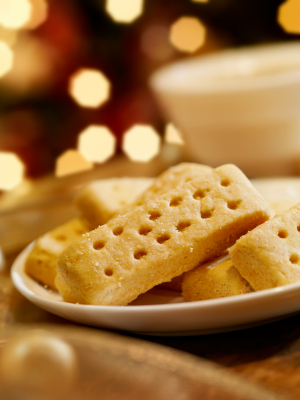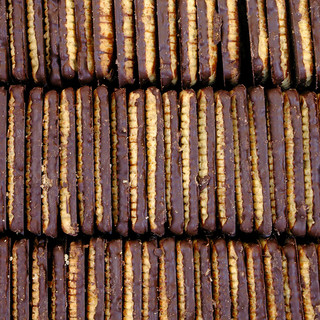- Home
- Blog
- Carbs, Sugars and Fibres
- Sugar - why quitting sugar guarantees you'll lose weight
Sugar - why quitting sugar guarantees you'll lose weight
Written by Catherine Saxelby
on Monday, 06 May 2013.
Tagged: BMI, Calories, carbohydrates, diabetes, diabetes type 2, diet, dieting, diets, health, healthy eating, healthy lifestyle, kilojoules, obesity, overweight, sugar, sugar substitutes, sugary drinks, sweetener, weight loss

Sugar. It's been labelled "deadly", "addictive", "toxic", "sweet poison" and blamed for the rise in global obesity in recent years." Get rid of the white toxin from your diet and you'll free up your body to drop those excess kilos" (or so say anti-sugar campaigners Sarah Wilson, David Gillespie and Robert Lustig). Here are the three real reasons why I believe quitting sugar helps you lose weight.
1. Cutting out sugar removes a lot of kilojoules/Calories
A level teaspoon of white sugar has only 70 kilojoules (16 Calories) but that's not the problem. It's not just the sugar. It's the company sugar keeps.
If you eliminate sugar-laden foods, you eliminate a lot of kilojoules/Calories from fat and refined starches too. That's because we don't eat sugar on its own. We consume it with fat and refined starches (you can't bake a decent cake or biscuit without flour, fat and sugar).
My short bread example
 Think of shortbread biscuits. Yes there's 12 per cent added sugar but with that comes 29 per cent fat from the butter and 65 per cent of starch from the flour. The sugar isn't the key issue. It's just part of the wider problem of junk food.
Think of shortbread biscuits. Yes there's 12 per cent added sugar but with that comes 29 per cent fat from the butter and 65 per cent of starch from the flour. The sugar isn't the key issue. It's just part of the wider problem of junk food.
Recipe for shortbread:
350 g flour (or flour and rice flour)
+
100 g white sugar
+
250 g butter.
| Shortbread 100 grams | grams fat | grams sugar | grams starch | kilojoules |
| 29 | 12 | 65 | 2220 |
Take a look at what you'll save if you say "No" to soft drinks, energy drinks, chocolate biscuits, lollies, doughnuts and muffins. For instance, cut out just one can of fizzy drink and you cut out 555 kilojoules (130 Calories) and 34 g sugar.
Carrot cake with icing 1400kJ (330 Calories) and 26 g sugar
Choc-chip muffin 1245 (295 Calories) and 13 g sugar
Doughnut 950kJ (225 Calories) and 13 g sugar
Chocolate bar 910kJ (215 Calories) and 29 g sugar
2 Tim Tams 770kJ (185 Calories) and 16 g sugar
Energy drink can 480kJ (115 Calories) and 28g sugar
10 Jelly beans 400kJ (95 Calories) and 16 g sugar
Removing soft drink is a strategy often suggested to curb childhood obesity. Even reducing the volume of soft drink – as New York city has proposed with its ban on supersized cups and limiting a single serve to 500 ml – can help.
2. Sugar is a "marker" for highly-processed foods
 When you quit sugar, you're cutting out foods nutritionists have always said you shouldn't eat.
When you quit sugar, you're cutting out foods nutritionists have always said you shouldn't eat.
No lollies, chocolate biscuits, cup cakes, fizzy drinks, caramel frappucinnos or Magnums means you're removing "junk food" that is kilojoule (Calorie)-dense, of poor nutritional value, that comes in huge portions, is highly refined with added colours, flavours and preservatives.
What's more, it's usually low in fibre and has a high GI (not good). None of these foods is any loss in a healthy diet. You're better off without them.
What these foods have in common is sugar. It's there for sweetness and flavour. And sugar does functional jobs like balancing acidity, preserving by preventing bad bacteria from growing and creating nice browning during baking. Just ask any chef.
3. Quitting sugar means more natural, unprocessed foods
What do you replace sugary foods with? Usually it's more fruit and dried fruit (unless you're a "Sweet Poison" fan), nuts, salads, water or you just eat more chicken, fish meat and vegetables at your meals. Sounds pretty healthy to me.
Here are my 9 simple swaps to limit your intake of sugar junk foods.
|
Instead of this sugary junk food … |
Choose |
|
sweetened soft drink |
water, mineral water, diet soft drink |
|
cordial |
water, or dilute cordial down so it just adds a bit of flavour |
|
fruit juice |
half juice (100% juice) with half water or just sip a small ½ cup serve |
|
chocolate or chocolate bar |
mug of hot milk with cocoa |
|
dessert e.g. cheesecake, pudding |
fruit salad, fruit sliced up on a plate, 2 scoops ice cream if you’re still hungry, ½ cup custard with canned apricots or fruit |
|
dessert e.g. apple pie, apple Danish, deep-fried apple turnover |
baked apple or stewed apple or pie-pack apple with a scoop of ice cream home-made apple crumble with oats and nuts frozen mixed berries with a scoop of ice cream |
|
lollies |
distract yourself if it’s after dinner and you’re not hungry. |
|
chocolate biscuits |
distract yourself if it’s after dinner and you’re not hungry. |
|
doughnut |
A piece of grainy toast with a nut butter |
Salty fat
Note: You can still eat a lot of kilojoules by eating fat and starch with salt. I call them salty fat. No sugar there.
- Watch how many potato crisps, corn chips or movie popcorn people wrap themselves around when no-one's watching.
- Check out the amount of gourmet cheese with crackers that is consumed after you've eaten dinner.
- Oh, and how could I not mention the tubs of hot chips or slabs of pizza at kids' parties?
The bottom line
You don't have to quit sugar entirely to improve your health and your weight (as the anti-sugar campaigners insist). Moderation, as always, is the key to eating healthily, sensibly and in a way that is easy to maintain. However, if you seriously want to lose weight, I do believe that eating less sugary junk food is a good thing to do.
Write out your day's intake of food. Circle the sweet foods and drinks you like to consume regularly or in large amounts. The most likely culprits are soft drinks, juices, cordial, chocolate, muffins and confectionery. Or circle the sweet foods you reach for when you need a comfort fix. Cut out those.
Remove the large amounts of sugar from your diet and don't worry about the little bits that make low-fat, high-fibre, foods palatable such as a sprinkle of brown sugar on porridge, a scrape of jam on grainy bread or a drizzle of honey on your unsweetened breakfast cereal. And don't stop eating fresh fruit.
Downloads / Fact Sheets
Download my free Fact Sheet on Sugar and where you'll find it
You may also be interested in...
About the Author
Catherine Saxelby has the answers! She is an accredited nutritionist, blogger and award-winning author. Her award-winning book My Nutritionary will help you cut through the jargon. Do you know your MCTs from your LCTs? How about sterols from stanols? What’s the difference between glucose and dextrose? Or probiotics and prebiotics? What additive is number 330? How safe is acesulfame K? If you find yourself confused by food labels, grab your copy of Catherine Saxelby’s comprehensive guide My Nutritionary NOW!
The Good Stuff
The Boring Stuff
© 2023 Foodwatch Australia. All rights reserved
Author photo by Kate Williams
Website by Joomstore eCommerce













